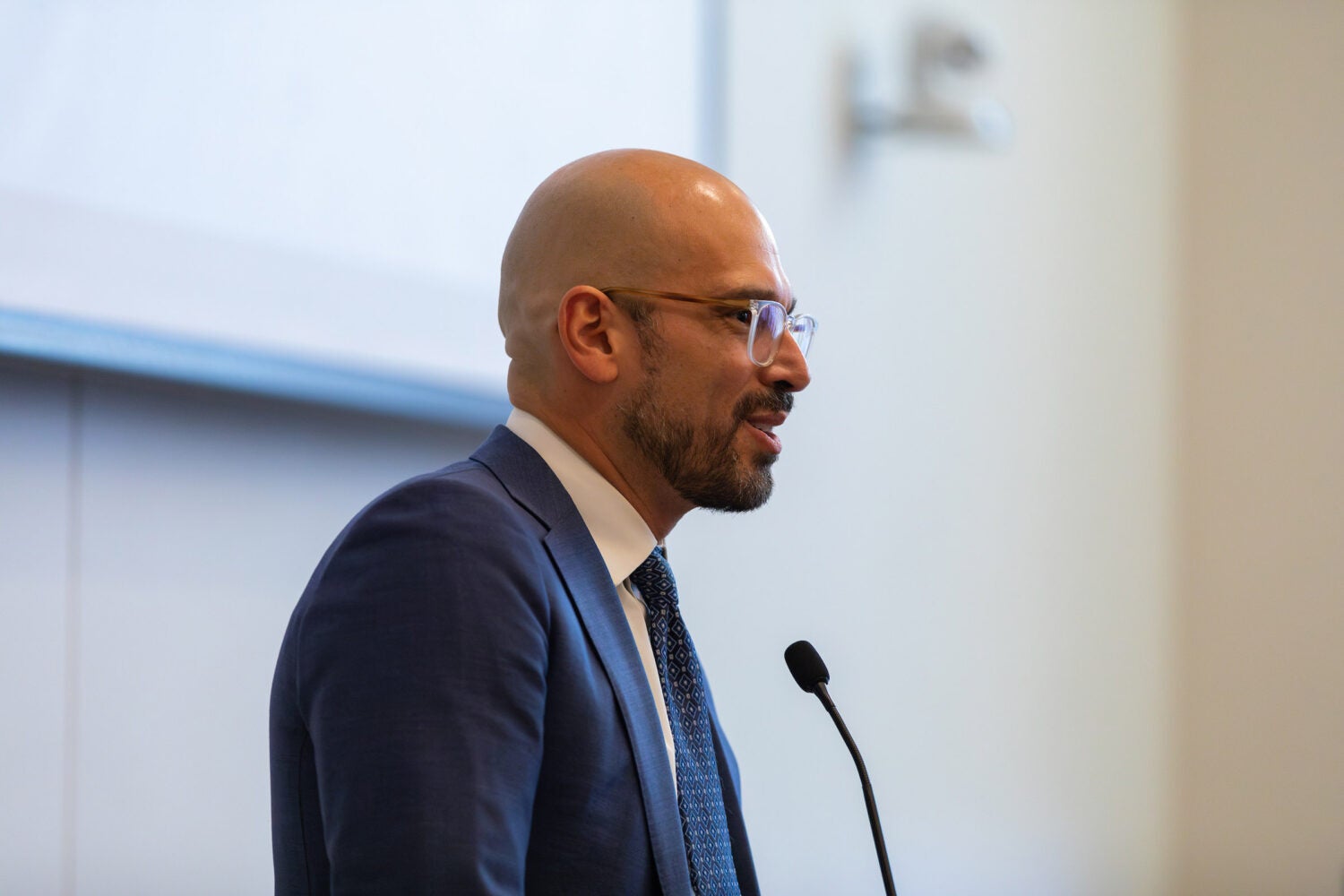The United States incarcerates more of its own people than any country in the history of the planet. Lawyers are a major part of the problem, says Andrew Manuel Crespo ’08, professor of law and faculty director of the Institute to End Mass Incarceration at Harvard Law School.
But, Crespo insists, lawyers, working with organizers on the ground, are also a necessary part of any movement to end mass incarceration. Crespo’s remarks were offered at an event celebrating his inauguration as the Morris Wasserstein Public Interest Professor of Law. His lecture, “Root and Branch: Lawyers, Movements, and the End of Mass Incarceration,” sought to explain the origins of mass incarceration in the U.S., the role lawyers have played in creating and maintaining the current system, and the importance of training lawyers to work in partnership with and in service of organizer-led movements pursuing radical, transformative change.
Crespo was introduced by Interim Dean John Goldberg, the Carter Professor of General Jurisprudence, who noted that the newly-minted Wasserstein professor had joined the law school faculty after a storied career as a public defender with the Public Defender Service for the District of Columbia. Crespo, he said, is also working on an innovative new book with John Rappaport of the University of Chicago Law School that is designed to teach students about the connection between criminal law and mass incarceration.
“It has truly been my pleasure and privilege to have worked closely with Andrew since he first joined the faculty,” said Goldberg. “Andrew is a brilliant scholar, a gifted instructor and mentor, a passionate advocate for justice, and a generous colleague and friend to those of us at Harvard Law School and well beyond. I can think of few, if any, people more deserving of being recognized with a professorship dedicated to public interest law.”
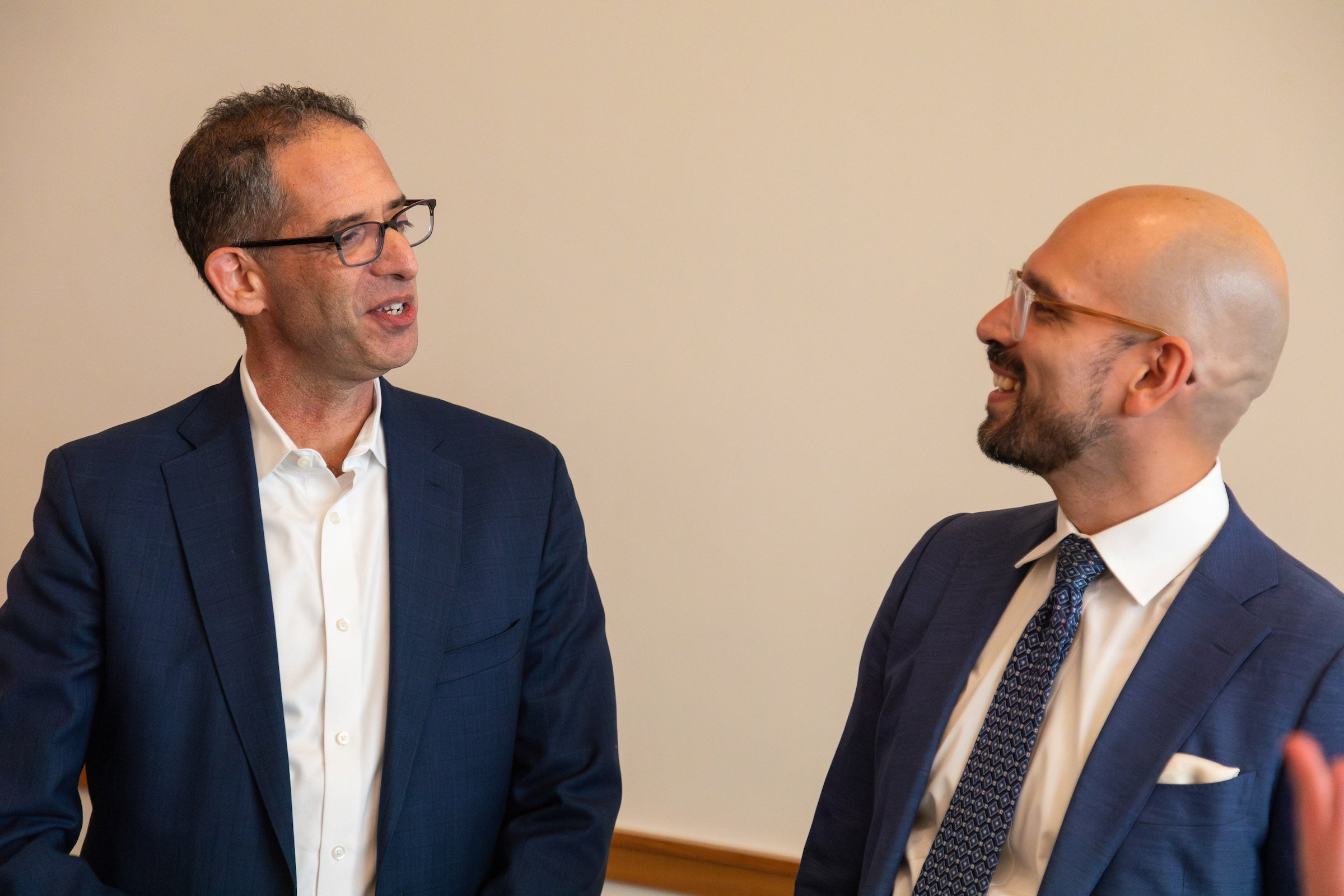
After thanking his colleagues, students, friends, and family, Crespo began with a sobering look at the scale of incarceration in the U.S., which exceeds that of any other country in the world. With close to two million people currently behind bars, nearly 80 million with criminal records, and nearly 120 million closely related to a formerly incarcerated loved one, he said, “You have a phenomenon so massive in scale that it’s touched close to half of the people in this country in a very direct and profound way.” And, added Crespo, “In addition to a massive scale, it has a massive impact on real people, [on] human lives, that is almost indescribable.”
But the issue is not just one of scale, Crespo continued. “Mass incarceration is finely targeted by race, by place, by class,” he said. Black and Latino Americans and the poor bear the brunt of incarceration, he added, and where people live also influences their risk. “In all of New York State, 42 percent of the incarcerated population comes from just seven neighborhoods in New York City, including Harlem and the South Bronx, where my dad grew up, and where my mom started teaching,” he said.
Crucially, Crespo insisted, mass incarceration is no accident. As he detailed in his talk, it is part of an apparatus of racial and social control that emerged in the aftermath of the Civil War, following the enactment of the 13th Amendment, which Crespo argued did not so much end slavery as “codify [it], provided that first, a person is convicted of a crime.” Tracing this legacy forward, through the federal war on drugs up to the present, Crespo argued that there is both systemic and overt racism at work in the contemporary penal system.
All of which, he said, leads to a set of what Crespo called “radically obvious ideas.” These ideas, he said, “are obvious insofar as they are hard to deny, and radical, insofar as accepting them would entail fundamental changes to the state of the world.” The first such idea, he said, is that mass incarceration should end. “It shouldn’t exist,” Crespo stated. “The United States shouldn’t incarcerate more of its own people than any country in the world. The United States shouldn’t continue a system of racial and social control with a genealogy tied to slavery.”
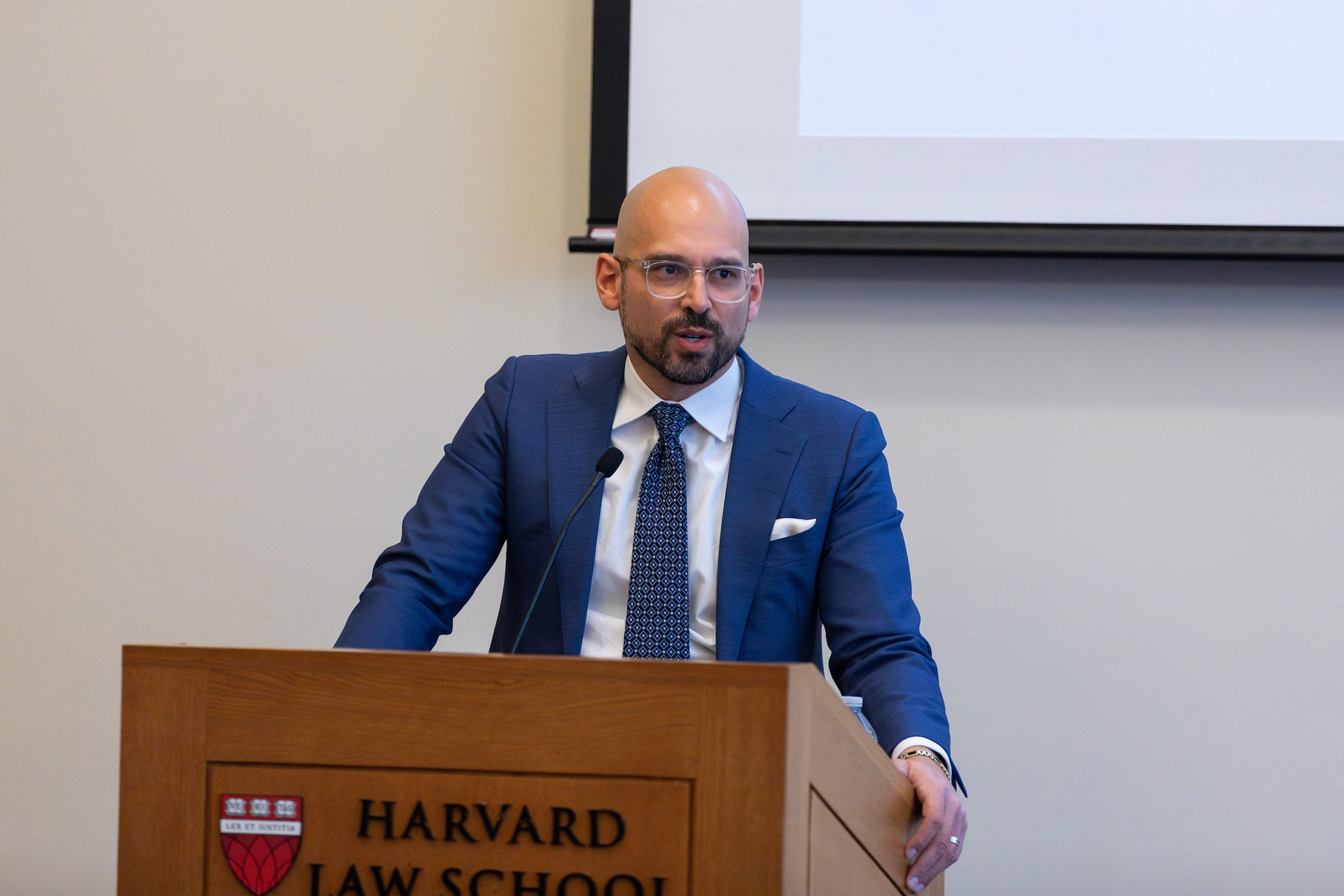
Second, he said, if we understand that the current situation did not come about accidentally, then we must also understand that ending mass incarceration requires more than just changing minds. It requires power — and a reconsideration of the role lawyers can and should play in helping communities build and use that power.
Crespo focused on lawyers, he said, because “lawyers have been uniquely part of the problem of constructing mass incarceration.” Across “all three branches of government, legislative, judicial, executive, lawyers have been some of the primary constructors of mass incarceration,” all of which, Crespo continued, “entails the idea that there’s a special obligation on us to do something about it.”
As proof, he pointed to the fact that lawyers made up a high percentage of legislators responsible for laws that significantly lengthened sentences over the last century, including mandatory minimums like the well-known three-strikes laws. At the same time, judges, whom Crespo noted are all lawyers, have rendered the constitution’s prohibition against cruel and unusual punishment a de facto dead letter when it comes to constraining severely punitive laws. And finally, drawing on his years of scholarship studying American plea bargaining and prosecutorial power, Crespo observed that unchecked prosecutorial discretion “turns prosecutors into the final adjudicators in criminal cases,” and is “the primary driver of mass incarceration in the United States.”
But if lawyers are in large part responsible for the problem, they can also play a vital role in eliminating it, said Crespo.
Drawing on his years of scholarship studying American plea bargaining and prosecutorial power, Crespo observed that unchecked prosecutorial discretion “turns prosecutors into the final adjudicators in criminal cases,” and is “the primary driver of mass incarceration in the United States.”
“One of the ways to do that is by trying to be a mitigator of the harm, which is the work that I did as a public defender,” he explained. Crespo paid tribute to the late Professor Charles Ogletree, Jr., who taught Crespo criminal law as a 1L at Harvard Law School and who inspired him to pursue public defense as, in Crespo’s words, “a calling, almost in the religious sense of the word. A calling to a vocation.”
But, Crespo said, he also felt an “an uneasiness, a dissonance” in his public defense work. Because although he was fulfilling an important right — access to counsel — he worried about the systemic ramifications of his work.
“If the criminal system is designed to punish poor people of color, then there’s a real risk that lawyers who make its processes more fair are not just failing to address the core issue,” he said. “There’s a risk that they — that I — added a patina of legitimacy to that system of oppression.”
Crespo stressed that he was not discouraging people from becoming defense attorneys. “As Premal [Dharia, executive director of the Institute to End Mass Incarceration] writes in her own essay about Gideon [v. Wainwright], there is no question that having good, resourced counsel has deeply positive effects on the lives of the people ensnared in the criminal legal system. There is critical value to that work,” he said.


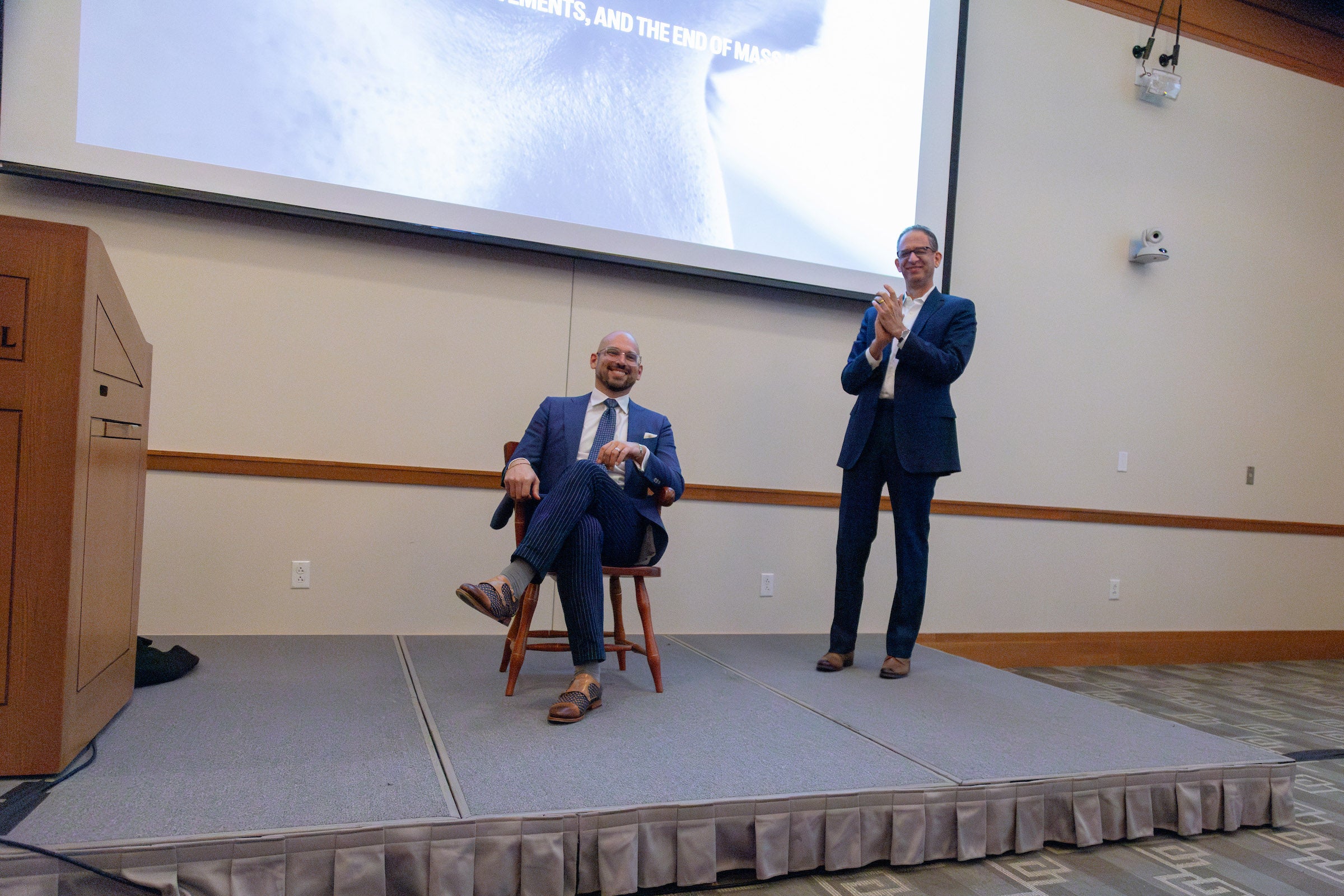
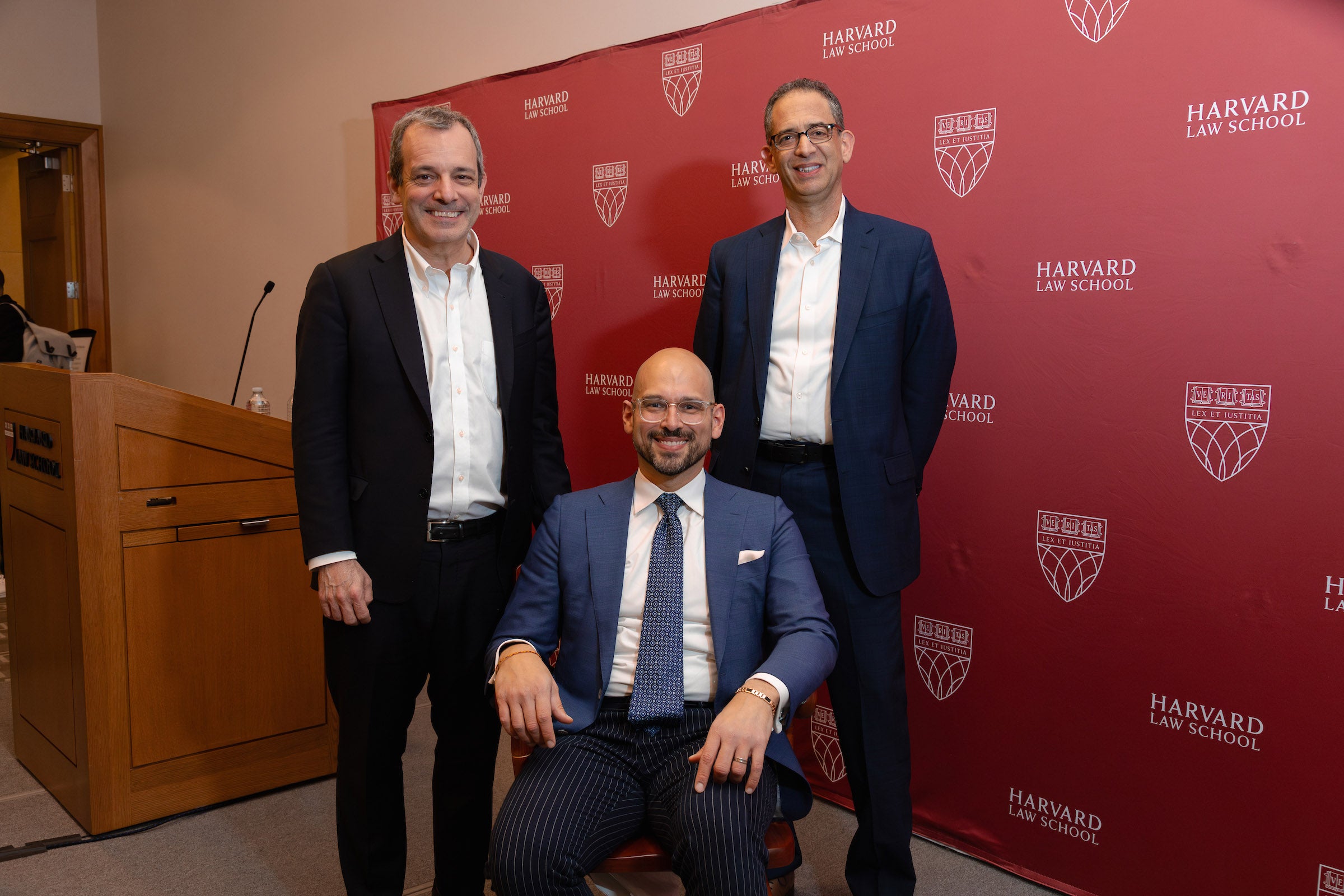

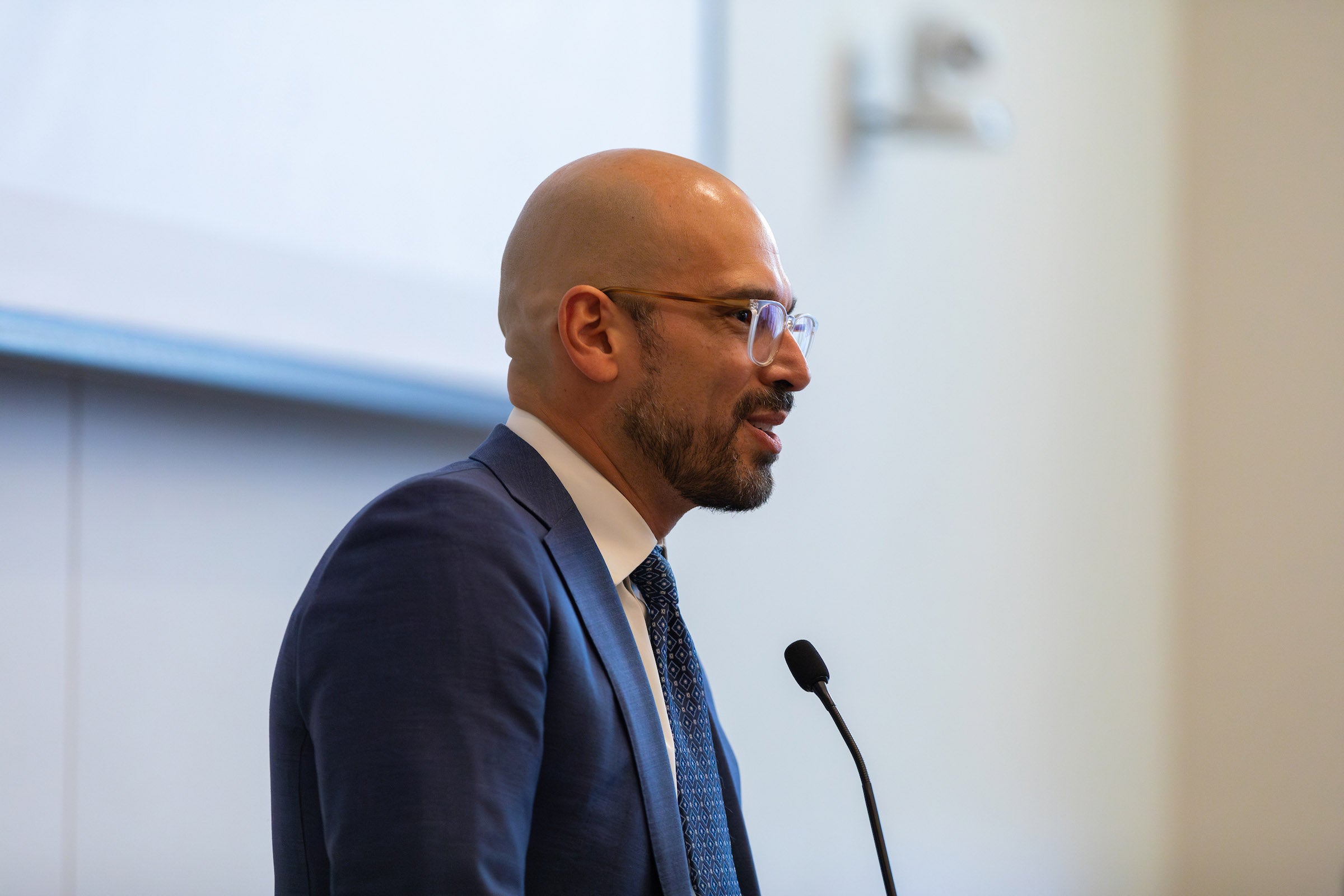
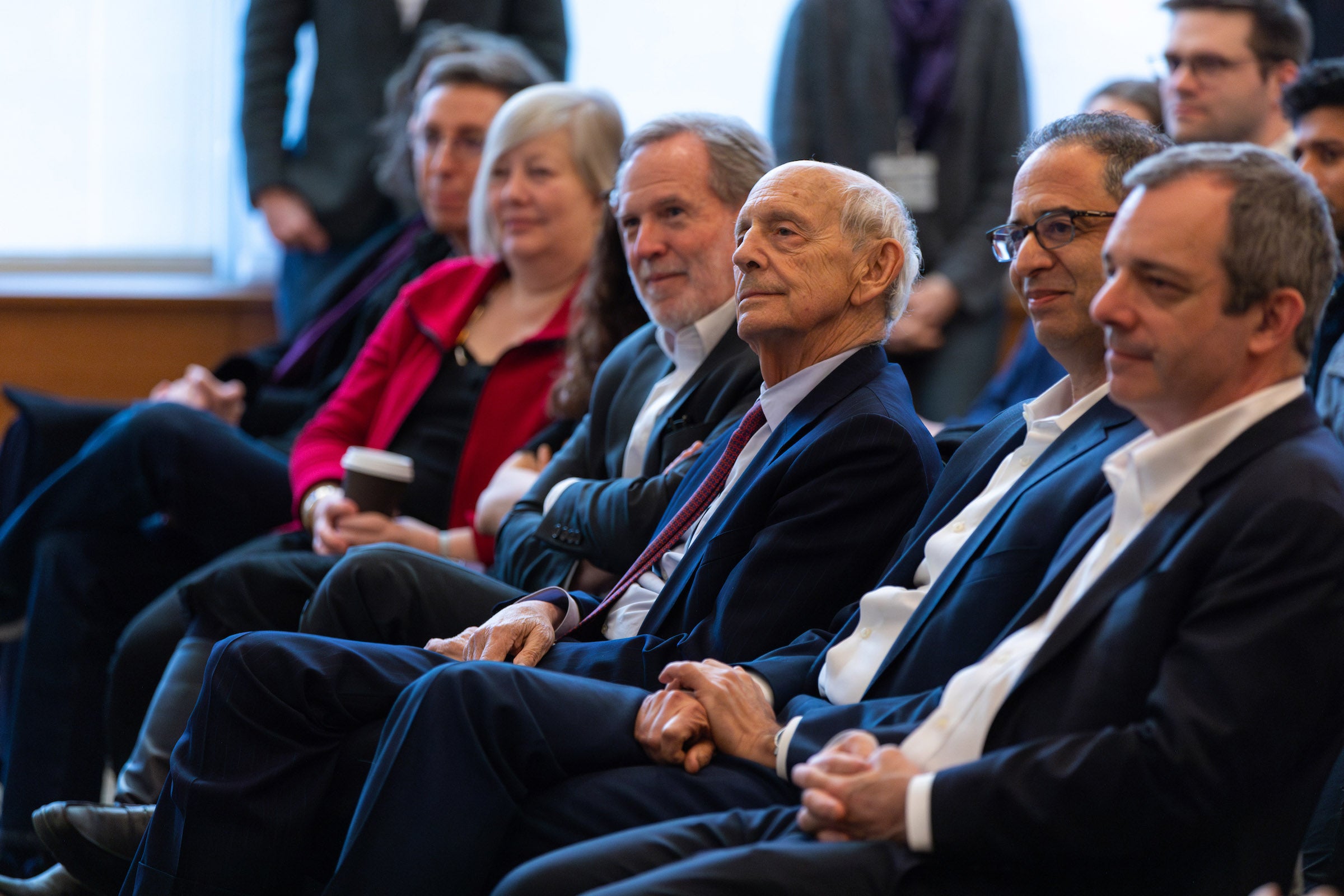

But even so, people facing prosecution need more than just lawyerly advice, Crespo said. “They need power. The power to fight back.” And that power, Crespo argued, does not come from lawyers. It comes from organizers who help communities of people build power for themselves. “As Marshall [Ganz] puts it so often, organized communities learn to strategize about how they can turn the resources they have into the power they need, to get the change they want. They do, in other words, movement work.”
And so, Crespo said, an important alternative to working as harm mitigators is for lawyers to find ways to work “in service of organizing,” in the words of Professor Jennifer Gordon of Fordham Law School.
Pointing to his most recent scholarship, Crespo said that a focus on organizing leads to asking “What would, what could, what might it look like to build collective defense among people facing prosecution? What would it look like if they were organized into something approximating a union able to leverage their collective power?”
And pointing to the central work of the Institute to End Mass Incarceration, Crespo explained that he and Dharia act as something akin to in-house counsel for anti-carceral organizers. “Part of what we try to teach [our students] is that to do this work well, you have to reimagine what it is that lawyers actually do [because] the lawyering in service of organizing models sees law differently, as subordinate to, and supporting of, an organizing-driven theory of change.’”
Litigation can be useful, in this model, regardless of the outcome in court, if it achieves organizing goals, “whether that’s to help craft narratives, to draw in resources, to gain attention, to gain information, to delay,” said Crespo.
It also requires flexible and highly skilled legal craft. Students in the clinic come in and may be initially surprised to find themselves digging deeply into areas of the law like eminent domain or restrictive covenants, Crespo said, “But that’s what was required by the moment and the contingencies of the campaign. [A]lways with the idea that it is again, subordinate to a bigger picture, part of a broader political campaign, but not with law as the engine of the change itself.”
The work also requires rethinking the relationship between organizers and lawyers — ensuring that lawyers do not take up too much space, do not “clientize” their movement partners, but also do not lean out too much and deprive them of their expertise. “In short,” said Crespo, “you have to have mutual respect among the lawyers and the organizers.”
“Part of what we try to teach [our students] is that to do this work well, you have to reimagine what it is that lawyers actually do [because] the lawyering in service of organizing models sees law differently, as subordinate to, and supporting of, an organizing-driven theory of change.’”
For this reason, Crespo said he and Dharia have integrated teaching about organizing into the institute’s coursework. “To me, describing organizing involves talking about how organizers use emotion and narrative to build motivation in the face of threats and hardships. And then how they reinforce that motivation and solidarity through real concrete strategic action, turning resources into wins,” he said. “To put it another way, organizing is a practice and a craft every bit as sophisticated as nuanced and as teachable as lawyering.” For that reason, he noted, he is working with a group of professors to turn the Institute’s established course on organizing, co-taught by Crespo and Ganz, into a large-scale course on law and organizing open to all students at Harvard Law School.
Finally, Crespo closed by observing how lawyers as a profession often think of social change differently than movement actors. “Movements,” he said, “are about the manifestation of radically obvious ideas, about trying to turn the world as it is into the world as it should be.” Lawyers, by contrast, “tend to focus on governance, on policy, on risk, and on the details of implementation, which is valuable,” he added. “But these two things can also be in tension. If movements sing the music of poetry, lawyers often write the essays of prose.” And, he pointed out, they can often be disturbed by demands for change that seems “unworkably utopian and therefore not pragmatic.”
In this context, Crespo noted, it is essential to talk about crime. Concerns about crime, Crespo said, are legitimate and essential, particularly because communities that are impacted by mass incarceration are also more likely to be victimized by criminal offending. This duality, he noted, quoting Derecka Purnell ’17, is well known to abolitionists. “We are those victims, those survivors of violence,” Purnell writes.
But the movement to end mass incarceration, Crespo observed, quoting abolitionist scholar Ruth Wilson Gilmore is not “a fever-dream demand to destroy all prisons tomorrow.” Rather, it is “about trying to do two things at once: reducing harm, while building responses to it that don’t depend on carceral systems.”
The work can be hard, and it can be uncertain, concluded Crespo, but he believes it is worth it. “Even though the goal may be far away, if you don’t name it and fight for it, you won’t get there,” he said, quoting abolitionist organizer Rose Braz. “And the work to try to make radically obvious ideas real in the world, to make the world look like it should instead of as it is, always feels impossible. Until somebody does it.”
Want to stay up to date with Harvard Law Today? Sign up for our weekly newsletter.
